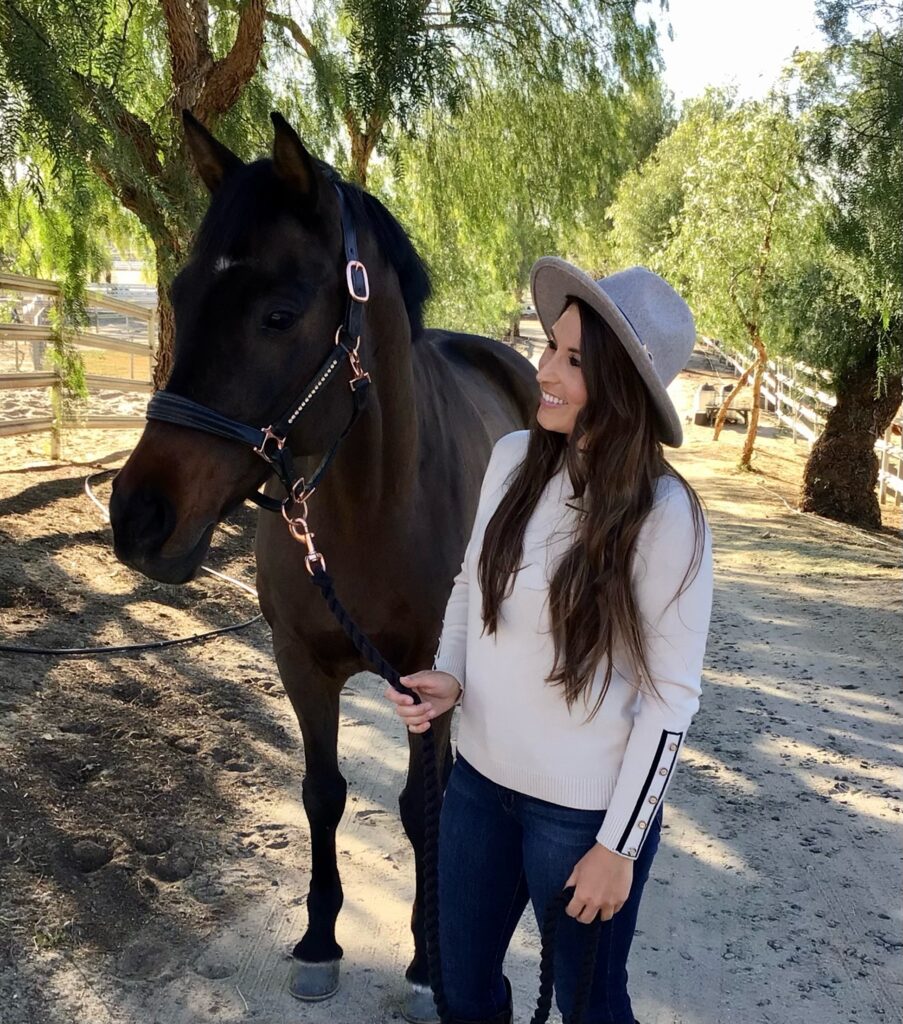A rare eye condition hasn’t stopped this California woman from pursuing her love of horses and show jumping.

A rare eye condition hasn’t stopped this California woman from pursuing her love of horses and show jumping.
It didn’t take Kaitlin Nolan long to be bitten by the horse bug. Nolan, who grew up in northwestern Pennsylvania before moving to California at age 10, begged her parents for horseback riding lessons until they finally relented when she was about seven. She concentrated on fundamentals for several years before taking up show jumping as a pre-teen.
“You’re either born with the horse bug or you’re not,” explained the 31-year-old Nolan, a restaurant server in Temecula, California. “I was definitely born with it. (My parents) thought it was a phase and that it would pass but it didn’t. They eventually gave in.”
At age 21, Nolan was diagnosed with Stargardt, a rare genetic eye disease that affects the macula, a small area of the retina controlling central vision. While vision loss typically occurs at an early age, it isn’t unusual for the condition to remain undetected until adulthood.
“At first, it was devastating. I kind of thought my life was over. I had no idea I had anything wrong with my eyes until it all came at once. I shut down for a little bit, didn’t know what I was going to do and moved back home.”



While her central vision continues to deteriorate, Nolan still has peripheral vision. She’s been able to keep her restaurant job since most of it involves memorization.
She took a break from riding for several years, but her love for horses never left.
“After I graduated college and started working a little more, I was able to afford it on my own as an adult. I picked it back up because I missed it so much. It’s my true passion.”
The jumper class in equestrian is scored based on a horse’s athleticism over fences. It’s measured by time and the ability to leave rails up. Jumpers compete against each other in the same height division. Nolan currently jumps at the 0.90-meter level. Once a jumper feels confident their horse is ready, they attempt to move up to the next height division.
“It’s based on comfortability and how much control you have. If your horse is running off with you after every jump, you’re probably not ready to move up to the next height. If you’re hitting the correct distance to the fence, and you’re not worried about the height or distance to the fence, you move up from there.”
Nolan remembers competing in her first show at a horse camp when she was 10. She had to borrow show clothes from some of the other campers. The competition consisted of cross rails, a series of poles six inches off the ground that crisscross one another.
The horse Nolan chose was named Gary. He was old, but she took to him right away.
“I loved him so much. He went around for me because we had a good relationship. I didn’t do great, I didn’t keep the trot up and we didn’t make some of the fences. But I was still very proud to be out there with him. It was only me and one other girl, and I got second out of the two of us. But I didn’t care; it was a great experience.”
Nolan didn’t compete again until she was 24. She competes in two to three shows a year on her current horse, Vintage Chianti, and estimates she has won five classes. She trains an hour a day five days a week.
A horse and rider must have complete loyalty and trust to be successful in show jumping. For Nolan, there’s nothing like the feeling of being one with her horse.
“For me, it starts on the ground, the day-to-day grooming, giving them treats, a bath, just building that trust. My horse is definitely particular about people she lets do things and ride with. The first week I had her, she was very standoffish to me. I didn’t have that bond with her yet. It’s just you and your horse. Nobody else has any influence over what you are doing because nobody else is riding with you.”
Nolan learned about Foreseeable Future through Wren Blae Zimmerman, a blind rider advocating for show jumping to be included in the Paralympic Games. Nolan reached out to her on Instagram and was surprised to discover Zimmerman also has Stargardt.
“I was like, ‘no way’. I’ve never even met somebody with my eye disease, let alone somebody who jumps horses as well. We became fast friends.”
Nolan applied for a grant during the COVID-19 shutdown in 2020, but wasn’t accepted until the following year. She plans to use the money to compete at a rated show in her area she’s had her sights on for several years.
“Those rated shows come at a much higher cost than the small local county shows. I was very thrilled, and my trainers were as well. It gave them a goal to look towards.”
Nolan hopes to start her own equestrian clothing line in the future. She began looking into the process a couple of years ago and believes a need exists.
“I have no background in fashion, so it’s been quite a learning process for me just learning the lingo and the industry. I have samples of four or five different pieces already and I’m figuring out the right fabrics, zippers and accessories. I know the market is there.”
